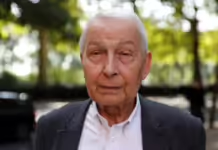
Patients in Liverpool now have a shorter wait time to receive treatment for cancer than other parts of the UK.
According to a study by Cancer Research UK, people in the UK are treated with chemotherapy and radiotherapy less often and face longer waits than those in other major countries.
Lynda H, who received radiotherapy treatment at Aintree Hospital for Stage 2 Breast cancer, said: “I think we’re fortunate in Liverpool that we have hospitals. If you live in a remote area, you may wait longer.
“I know someone who lived in Wales that travelled around 40 miles to get treatment.”
Liverpool University Hospitals NHS Foundation Trust has improved their waiting lists, so NHS England has removed the trust from its cancer tiering. This is a national programme that identifies trusts who need the most support.
The trust is on track this month to reach a target set by NHS England to ensure three-quarters of patients get a cancer diagnosis or have it ruled out within 28 days.
Lynda said: “I didn’t have any issues with how the process happened, I don’t suspect they could’ve done it any quicker”.
The least likely group to receive these treatments are patients who are 85 and over.
Lynda was 68 when she was receiving treatment. She said: “Fortunately for me I coped reasonably well, you have lots of appointments, it is ongoing, and it is a stressful time for people but there are lots of people going through the same process.”
In the Cancer Research study, countries that used chemotherapy and radiotherapy more often and had shorter waits for treatment typically had better cancer outcomes.
Chemotherapy is when medicine is used to kill cancer cells and radiotherapy is a treatment where radiation is used to kill cancer cells.
Lynda is now cancer-free but still must take preventative methods to make sure the cancer doesn’t come back.
She will be taking tablets for five to six years, and mammograms every year for five years. She also has bone infusions twice a year due to osteopenia, which is a loss of bone mineral density.
Featured image (c) Abigail Ford











